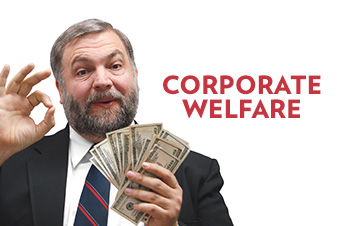Media

The Keystone State of Corporate Welfare
Pennsylvania’s corporate welfare culture is pervasive. The state has the dubious distinction of leading the nation in subsidy payments since 2007—without getting much in return. This large transfer of wealth from taxpayers to private businesses has produced plenty of bad investments.
Such investments have involved high profile companies like Kraft Heinz and American Eagle, as well as lesser known companies like Aquion Energy and Unilife. We document these individual missteps—along with many other examples—in our new corporate welfare resource page.
The page includes a map of corporate subsidies which range from a railroad terminal project in Erie to tens of millions of dollars of subsidies for Aramark’s headquarters in Philadelphia. The page also summarizes the state-wide consequences of corporate welfare—namely the slow economic growth produced by the government’s insistence on picking winners and losers in the marketplace.
However, there is reason for optimism. By reducing political handouts, the House was recently able to pass a budget that restrains government spending and shields taxpayers from devastating tax hikes.
The House budget proposes a reduction in corporate welfare spending totaling more than $50 million. These reductions apply to the General Fund budget, but a large portion of corporate welfare is located in other funds like the Race Horse Development Fund, which amounts to approximately $250 million in subsidies annually.
CF has led the charge against economic favoritism for years, which is why it’s encouraging to see lawmakers acknowledge the need to dial back special favors to private interests and focus on creating an economic environment that works for everyone.